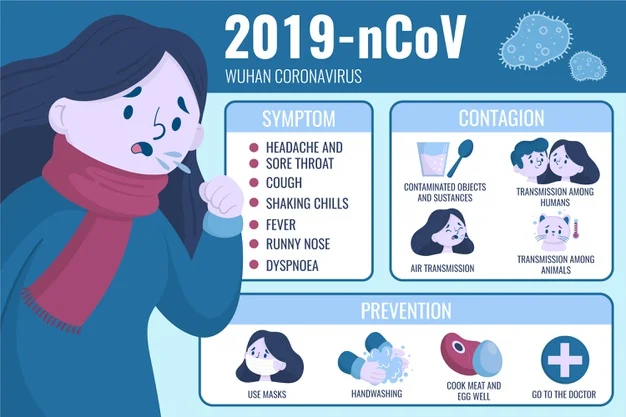Debunking Coronavirus Myths: It's Not as Deadly as You Think
March 02, 2020
Nur Hafiza Abu Bakar
With the crazy outbreak of Coronavirus, world public health is trying their best to control and fight against this disease. As for now, the number of infected cases continues to increase. Many have yet to know the severity of this virus and but speculations have been spread without any factual bases.
A video shared by Business Insider debunking the myths shared on social media regarding the Coronavirus or COVID-19. Dr. Syra Madad (Special Pathogens Expert) and Dr. Stephen Morse (Epidemiology Professor) reveal a number of myths that are proven to be false.
We’ve stumbled across various misconceptions netizen has spread around without backing the statements up with facts. Is Coronavirus deadly? Read below to find out:
1. Getting the coronavirus is a death sentence
There are many things we don’t know yet about the Coronavirus disease. People have been mistaking about the virus as deadly and it has triggered insecurity to the public. How can we keep ourselves safe?
The data shows that the virus seems to be a mild type of viral infection. As of February 20, the current fatality rate is still less than 4% and about 18-20% that may be in the critical condition. Those who died from the virus were already sick and admitted to the hospital. So those who have just been infected and got hospitalised have a 98% chance of surviving. So no, it’s not a death sentence.
2. Only Chinese people have Coronavirus disease
This outbreak first began in China, but the reality is that it is everyone’s virus and the virus can easily be passed through human contacts. It can travel far enough just like the flu and it could be anywhere, we never know! Infectious disease does not have any boundaries and borders. Therefore, we are susceptible to be infected.
3. Coronavirus is the most dangerous virus
We had several outbreaks previously like SARS, Ebola and other different viruses in the world that are not known. To prove this statement is a myth is by comparing with another type of virus like Ebola. Ebola has a much higher fatality rate compared to Coronavirus as for now.
The official count also has a high number of recoveries, so do consider how many who have actually recovered from the diseases. Here in Malaysia, our medical frontline workers have been working so hard to make sure the recovery process goes well.
4. Wearing a mask will protect you from the virus
Of course, wearing a mask can give a sense of protection. We have several kinds of masks such as the surgical mask and N95, which one can protect you from the virus?
The problem occurs when we don’t wear the mask properly. Usually only those from the medical background who know how to properly wear the mask. The public has never really been trained. We may not know what kind of mask to wear.
We often see people in the public wear the normal surgical mask. There’s another type of mask where only healthcare workers wear, it’s called the N95 mask or the respirator. This mask is able to filter particles that are airborne with 95% efficacy. In order to wear this mask properly, healthcare workers typically have to go through fit testing to make sure they have a perfect seal.
Keep in mind that wearing N95 mask can be quite uncomfortable even if it fits well. The mask does not allow us to breathe smoothly. The mask is used just for those who are infected with the actual Coronavirus disease. The only thing that is proven to be effective in protecting yourself is to wash your hands often for 20 seconds with soap.
If you’re sick, it’s best to just stay at home. There are other public health measures shared around that are extremely effective to protect yourself.
5. The Coronavirus came from bat soup
A video that went viral showing people eating bat soup gave major misconception on how the virus was developed. It did not come from the bat soup. Experts say that the current Coronavirus started in Wuhan, China in a wet market where a number of different animals sold there.
There are speculations, but it is never scientifically proven that the virus came from bat soup. One thing for sure is that once you got the Coronavirus disease, the form of transmission is highly contagious as it can be infected through droplet spread, which is when you sneeze, cough, drip or exhale.
6. You can get Coronavirus from a package sent from China
It is very unlikely for you to get infected from the package you received from China. Consider the time it takes for you to receive the parcel. From China to Malaysia, it would take around 1-3 weeks maximum.
As for now, what is reported the virus can be infected through droplets. So, even if there is virus stuck on the package, it may be able to survive outside of the human body for long.
7. Closing borders will stop the virus from spreading
These types of respiratory viruses have no boundaries at all. It’s not the fault of the government this outbreak may reach and spread to different countries. It’s the nature of the virus itself. Travel bans historically have been proven not to be very effective. In fact, travel bans can cause more fear and chaos in the country.
People would become more reluctant and afraid to come forward with actually reporting that they had the illness. The best way is to cancel or postpone any possible travel plans. In other words, non-essential travel should be restricted to the affected countries.
Centres for Disease Control’s website has a travel health advisory section where you can actually go to and put the name of the country and it’ll provide you with the precautions you need to take. It is also advisable for you to go to your healthcare provider and seek assistance and guidance from them when needed.
8. The virus only affects older people
Not only older people, but adults, children and infants. The older people are the ones who are more likely to have severe disease. At this rate, older people have to be more careful to prevent themselves from getting the virus.
9. Coronavirus is the same as SARS
Coronavirus is in the same family as SARS. Currently, there are three Coronaviruses that are known to cause more several infections in humans and SARS is one of them. MERS or Middle East Respiratory Syndrome is another one.
SARS was more severe in terms of the fatality rate that was reported which was about 10% compared to the Coronavirus which is 3.8%. It’s still way too early to tell how dangerous the virus is. Coronavirus is different as it spreads a lot more like the flu. Large numbers of deaths don’t necessarily mean that it’s a very lethal virus.
It just means a lot of people have been getting it, and some unfortunately die. Let’s take season flu as an example, it began in October last year and the Centers for Disease Control and Prevention are already reporting over 10,000 deaths, with millions of people being infected.
10. My pet could give me the virus
There’s still a lot of things yet to be discovered related to this virus. There are no proven cases in which pets are transmitting the virus to their owners. It is more likely for us to pass the virus to our pets.
11. The Coronavirus was purposely created
There are three coronaviruses reported in three decades. In fact, there are many of them in nature that has yet to be known that looks exactly like SARS. It is just another type of virus in the same family. Infectious diseases can be caused by a number of things and they’re mostly natural in the environment. It could be due to climate change, ecological factors, agricultural factors, human behaviour and many more.
The outbreaks are inevitable. It could be extremely amazing for anyone to actually invent or create the virus. Our world is still way behind nature in being able to do that.
12. Antibiotics can prevent and treat the virus
Viruses and bacteria are two different microbes. Antibiotics are used to fight against bacteria. For viruses, antiviral medications play its part as prevention. For seasonal flu, patients will be given Tamiflu, which is an antiviral medication.
Antibiotics in this context do not work unless the patients have secondary infections that are bacterial in nature. There are a couple of drugs that are experimental, but they’re in development the stage that are showing promising results to go against this particular virus.
Since we’re still in the early stage of coronavirus disease, a lot of things can happen.
The myths listed above could only last for a while, still, we don’t really know. There will be a lot of rumours spread that are not factual. So it’s really important to only refer to credible sources such as our Health Ministry and the World Health Organization’s website. Do not spread any speculations that could cause more panic and fear to the public.

The Ministry of Health Malaysia continuously giving us updates on the current number of infected and cured cases in the country on their official Twitter account. Keep yourself updated on the current news and don't forget to always take precautionary measures.
Kickstart your education in Malaysia
We'll help you find and apply for your dream university
You might be interested in...
- Raising Awareness of the Threat of Microplastics Pollution on International Mother Earth Day
- The Role of Education in Promoting Health Equity: Lessons from World Health Day 2024
- Navigating Credit Transfers: A Guide for Students Switching Institutions
- Explore the Benefits of Studying in Malaysia After SPM Examination
- SPM Leavers’ Guide to Malaysian Scholarships: Types, General Requirements, and Practical Tips
- Crafting a Greener Tomorrow: Empowering Change through Zero Waste and Upcycling Practices
- Malaysian Higher Education's Global Outreach: Collaborations with International Institutions
- Initiatives by Universities in Malaysia to Prepare Students for Globalization
- PHAM 2024 Takes Center Stage at Sunway University, First in Asia
- Malaysia as a Destination for Global Educational Excellence








